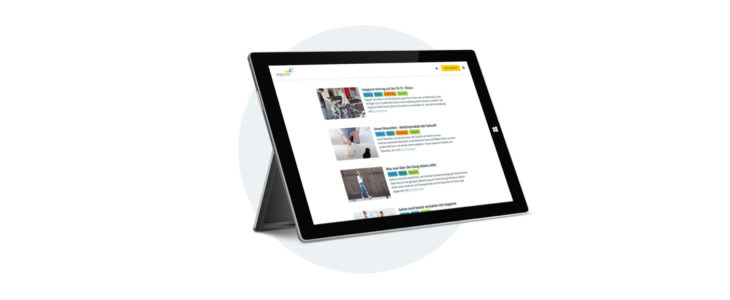Gait analysis with stapp one: detecting neurological diseases

Many neurological diseases limit ability to walk. They can therefore be detected and, to a certain extent, determined with the help of a gait analysis. However, first signs are hardly visible to the naked eye. With the intelligent stapp one sensor sole, the smallest gait abnormalities can be visualized and gait analyses can be performed more easily and accurately than ever before.
A person’s gait reveals a lot – including neurological diseases. For dementia patients, for example, fast and short steps are typical. The propulsive gait or Parkinson’s gait is similar. Patients are walking with their upper body slightly bent forward, in small steps and reduced arm movement. At severe cases, these characteristics can be recognized by therapists with the naked eye. With early stage diseases the changes in the gate pattern are subtle, therefore much harder or even impossible to detect. With the intelligent stapp one sensor sole, even the smallest changes in the movement pattern can be detected.
Early detection of gait abnormalities
The intelligent stapp one sensor sole is simply inserted into a comfortable shoe and measures the patient’s foot pressure load. The corresponding medical software provides a visual live-biofeedback for therapist and patient, as well as information on other gait parameters, such as cadence, stride length and gait cycle. Based on this feedback, abnormalities in the gait pattern are objectively visualized and can be analyzed. If stapp one is used for monitoring over a longer period of time, both positive and negative changes can be precisely tracked. In this way, therapies can be adapted individually.
stapp one can also be used to quantify movements that are difficult or almost impossible to detect for the naked eye. Therefore gait irregularities are detected and treated at an early stage.
A quick reaction is very important because the systems responsible for balance and gait can be trained. With suitable exercises and movement – even if it is just going for a walk – the motor system and the balance system are preventively supported. The nervous system is given the opportunity to compensate for the existing defect. With stapp one sensor soles, patients can correct themselves and therefore perform exercises correctly and effectively.
Save and compare objective data
stapp one makes it possible to save the objective data obtained from the assessments and compare it with other analyses. In this way, the course of the disease or therapy can be visualized and objectively documented. This not only enables comprehensive therapy, but is also a valuable tool for prevention.
Do you have any questions about the use of stapp one? Contact us! We are always at your disposal.

